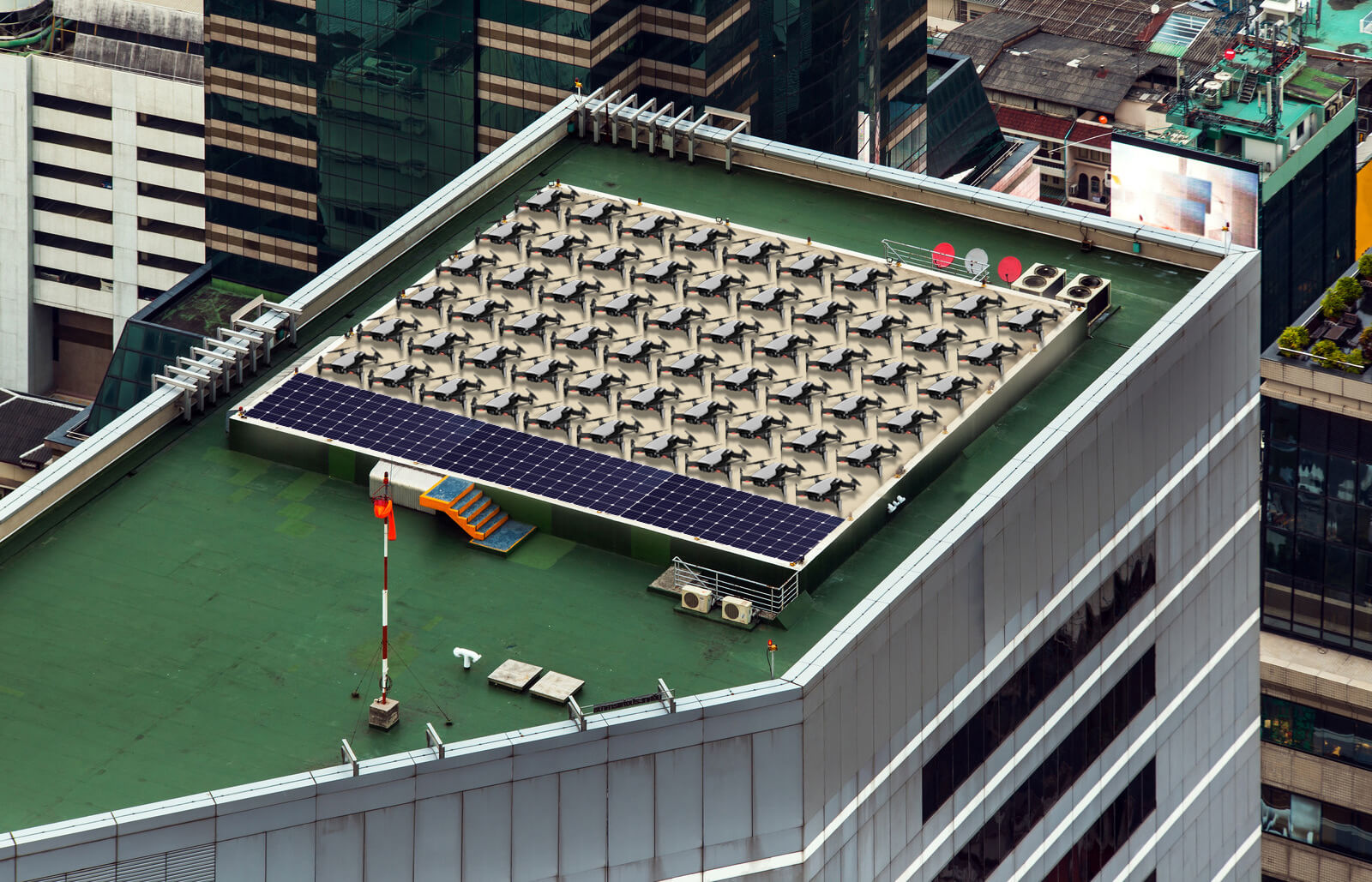In five years, a drone might save your life.
Hive is a concept for a system of emergency response drones for the San Francisco Fire Department. Using Hive, the S.F.F.D. would be able to safely survey dangerous areas and deliver emergency supplies quickly during periods of high road congestion or natural disasters.
I was the lead researcher for this group project with Yang Hong, Daniel Frank, and Grace Park.
Brief
Develop a vision for smart cities that is speculative, yet grounded in the now.
What I Did
I interviewed members of the public, conducted secondary research, and developed the story of the concept with visuals/animations.
Type Of Work
- Speculative Design
- Design Research
- Experience Design
- Civic Design
- Service Design
Class
IxD 4: Experience Design, 2018
Instructor
Trends
Crowding city streets
The San Francisco Bay Area, home to the world's largest technology companies, is also one of the worst places to own a car. In a 2018 study by INRIX, a location analytics firm, San Francisco was ranked the 8th most congested city in America. Drivers spent an average of 116 hours in traffic a year.
In recent years, there's been a rise in ridesharing companies like Lyft and Uber that promise citizens a solution. By allowing anyone with a car to offer transportation services, ridesharing theoretically reduces the need for individual vehicle ownership and therefore reduces pollution and congestion as well.
However, recent research suggests that Lyft and Uber may be making things worse.
Municipal and civic officials in cities across the country are grappling with how to respond to the unexpected arrival and rapid growth of new mobility services. These include ride services such as Uber and Lyft (also called Transportation Network Companies, or TNCs)
TNCs have added 5.7 billion miles of driving annually in the Boston, Chicago, Los Angeles, Miami, New York, Philadelphia, San Francisco, Seattle and Washington DC metro areas.
The New Automobility: Lyft, Uber and the Future of American Cities, Schaller Consulting, 2018
29% of those who live in more urban neighborhoods of cities have adopted ride-hailing and use them more regularly, while only 7% of suburban Americans in major cities use them to travel in and around their home region.
Based on frequency of ride-hailing use weighted data, a majority (61%) of trips would have not been made at all, or by walking, biking, or transit.
Challenges
Effective emergency operations
In a potential future where ridesharing increases road congestion, how would emergency services continue to operate effectively?
First, we had to understand the specifics of San Francisco's emergency response infrastructure. I reviewed government webpages and records to learn how emergency calls are processed and learned something unusual: the Fire Department is responsible for emergency medical services.
I used this research to create a simplified task flow of how San Francisco processes fire and medical emergency calls.

Perspectives
Interviewing city firefighters
It's crucial to look beyond documents and learn about people's experiences. I spent a few afternoons walking around the city, knocking on the doors of local fire stations. I got to talk to 4 firefighters about their jobs, how the S.F.F.D. operates, and the challenges they face. Here a few highlights from those conversations.
The most stressful part about the job is the fire itself. It is unpredictable and it’s like fighting an invisible enemy…we also get a lot of traumatic mental illness calls.

Mike C.
35 years old
We have guidelines…how fast an ambulance needs to be at an emergency, or how quickly an engine needs to be at a fire. That’s how they decide where to build stations.

Scott D.
39 years old
There was a petition to move the cycling lane in between parked cars and the curb to protect cyclists...if they go ahead with it, our engines may not be able to pass through.

Dave S.
28 years old.
The ambulance is run by the fire department…they constantly move around the city to ensure efficiency. They use something called System Status Management.

Matt L.
25 years old
Identified Need
Making effective decisions
Although bureaucratic and structural limitations can impede a firefighter's work, I learned that information can be a powerful ally. After all, making decisions under pressure depends on getting accurate, timely information about incidents.
However, this is where the current system has limitations:
- Caller descriptions may be incomplete or inaccurate due to emotional distress.
- Traffic may restrict emergency services from examining incident scenes in person.
- Satellite imaging is not fast enough to get information from rapidly evolving incidents.
In this context, good information can be the difference between life and death.
Opportunity
Information gathering drones
In the smart city of the future, how could firefighters safely reduce uncertainty and operate more efficiently?
One possible solution would be the use of remotely operated drones. Flying vehicles with cameras would allow the S.F.F.D. to gather information in dangerous situations without any risk to human life. Additionally, drones could collect and transmit imagery much faster than satellites.
Public filings indicate the S.F.F.D. are already exploring this idea.
Stakeholders
Listening to locals
It seemed like using drones would offer firefighters an easy solution for situation awareness in the field. However, we still needed to understand the effects of implementing them in a public setting. Members of our team spoke to 6 members of the public that included a drone photographer and drone programmer.
A common theme was concern around the legal and ethical risks from drones.
The feeling of being watched is a weight over our freedom. Although we might not break the law or do anything wrong, it adds a fear of footage being used against you.

Stephen A.
60, retired
Drones are like miniature aircraft. From a legal perspective, you’d basically be operating a bunch of small airports. There’s a lot of ways things could go wrong.

Xavier A.
24, drone programmer
I don't know. Even if there's technology to keep drones from hitting each other….there might end up being chaos on the street.

Arjun S.
22, student
People are concerned about their privacy, especially people who live in high-rise buildings, they don’t usually close their curtains.

Alfred C.
28, drone photographer
Solution
Emergency drone stations
It seemed like the people we talked to were hesitant about the commercial and government use of drones because it was a new technology that could malfunction or be misused. However, a national survey of 636 Americans indicated that people are the most supportive of drone uses with a clear public benefit, like climate research or search and rescue operations.
Concept
Hive drone network
Hive is a network of drone charging and delivery stations located in the 45 fire stations across San Francisco. Each station would contain wireless drone charging pads powered by a solar battery. The network would operate independently of the power grid, allowing local emergency services to gather information in the event of a blackout or natural disaster.
I created a mockup of an example charging station and designed an interactive map in Mapbox to visualize the Hive network.

Future steps
Research legal limitations
The focus of this project was to create a conceptual smart-city solution that was speculative but grounded in the current moment. To make a project of this scale real, we would need to do more research around understanding the current system and validating our concept within its current constraints. These could include steps like:
- Exploring the local legal frameworks around drone operation
- Speaking to paramedics, ridesharing drivers, and city officials
- Researching new developments in drone technology

